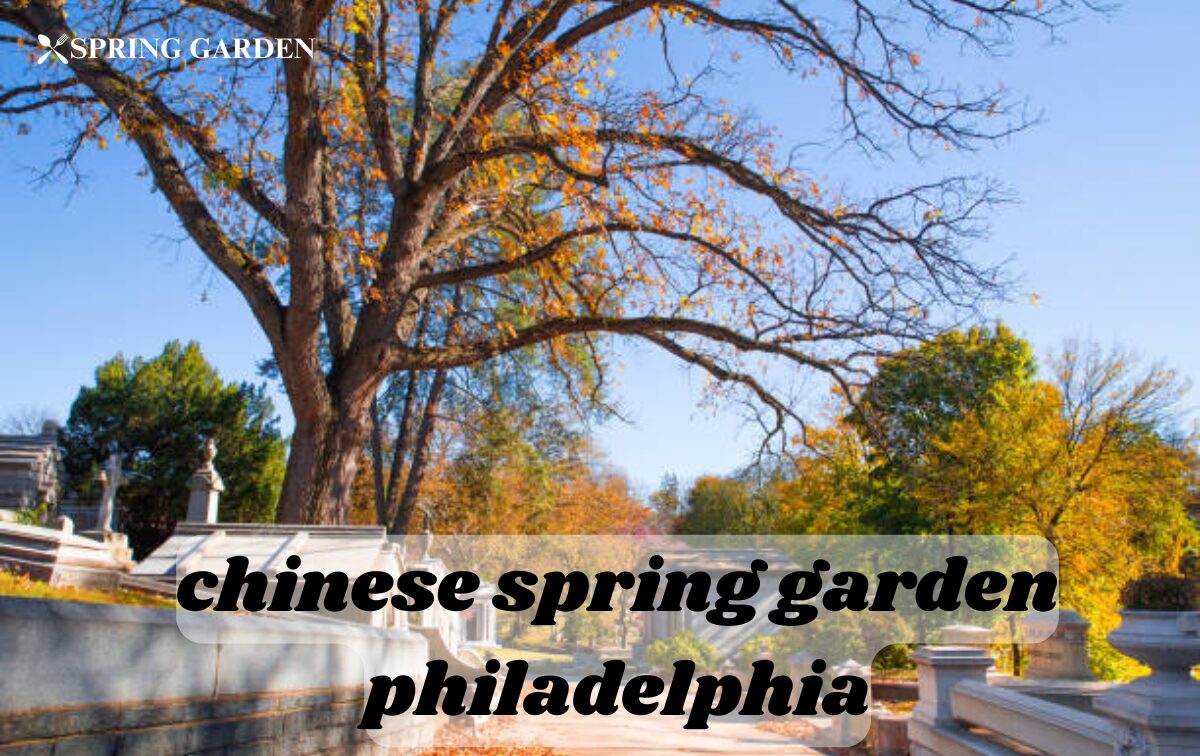Philadelphia is home to a wealth of cultural and historical landmarks, but one of its most serene and enchanting hidden gems is the Chinese Spring Garden. Nestled in the heart of the city, this garden blends traditional Chinese landscape design with seasonal beauty, offering visitors a peaceful escape infused with history and symbolism. Whether you’re an architecture enthusiast, a nature lover, or simply looking for a quiet retreat, this guide will take you through everything you need to know about the Chinese Spring Garden in Philadelphia.
History and Cultural Significance
Origins of the Chinese Spring Garden
The Chinese Spring Garden in Philadelphia was designed using classical Chinese landscaping techniques that date back over 1,000 years. Inspired by ancient Suzhou-style gardens, it reflects principles of harmony, balance, and natural beauty. Every element, from the placement of stones to the flow of water, follows feng shui principles, creating an environment of peace and reflection.
Architectural Influence
The Chinese Spring Garden showcases elements commonly found in traditional Chinese gardens, including:
- Pavilions and Pagodas: Traditional Chinese architecture featuring curved roofs and intricate carvings.
- Moon Gates: Circular doorways symbolizing unity and perfection.
- Rock Formations: Represent mountains and are strategically placed for aesthetic and spiritual balance.
- Water Features: Streams, ponds, and waterfalls signify life and prosperity.
Symbolism in the Garden’s Design
Each feature in the Chinese Spring Garden in Philadelphia holds a deeper meaning. For example:
- Cherry Blossoms: Represent renewal and the fleeting nature of life.
- Koi Fish: Symbolize strength and perseverance.
- Lotus Flowers: Signify purity and enlightenment.
“The beauty of a classical Chinese garden lies in its ability to transport visitors into a poetic landscape.” – Chinese Garden Master Liu Fang
Seasonal Beauty in the Chinese Spring Garden
Springtime Wonders
Spring is arguably the best time to visit the Chinese Spring Garden in Philadelphia. As flowers bloom and the air fills with the scent of cherry blossoms, the entire space transforms into a breathtaking scene reminiscent of a traditional Chinese painting.
Flora and Fauna
| Plant | Symbolism |
| Cherry Blossoms | Renewal and the fleeting nature of life |
| Peonies | Prosperity and good fortune |
| Magnolia Trees | Nobility and dignity |
| Lotus Flowers | Purity and spiritual awakening |
Besides plants, the koi ponds are filled with vibrant fish, representing luck and perseverance. Their graceful movements complement the peaceful atmosphere of the Chinese Spring Garden.
The Magic of Autumn and Winter
During fall, the Chinese Spring Garden transforms into a stunning landscape filled with red and gold hues. In winter, a light dusting of snow covers the pavilions, creating a serene, almost mystical setting. The contrast between the bare branches and the white ground enhances the garden’s meditative qualities.
Must-See Attractions in the Chinese Spring Garden
The Main Pavilion
A stunning focal point of the Chinese Spring Garden in Philadelphia, the pavilion is an ideal spot to relax and soak in the surroundings. With traditional red pillars and intricate woodwork, it often hosts cultural exhibitions and performances.
Stone Pathways and Rock Formations
The Chinese Spring Garden features zigzagging stone paths designed to slow visitors down, encouraging mindfulness and deeper appreciation of the landscape. These paths lead to intricately placed Taihu rocks, sourced from China, known for their naturally eroded, sculptural shapes.
The Koi Pond
No visit is complete without stopping by the koi pond, where vibrant fish swim beneath the reflection of cherry blossoms. According to Chinese legend, koi fish symbolize strength, as they are believed to transform into dragons if they successfully swim upstream.
Experiencing the Chinese Spring Garden: Activities and Events
Annual Festivals and Events
The Chinese Spring Garden in Philadelphia hosts several cultural events throughout the year:
- Spring Lantern Festival: A dazzling night-time event featuring lanterns, performances, and traditional music.
- Chinese New Year Celebrations: Includes dragon dances, calligraphy workshops, and food tastings.
- Mid-Autumn Festival: Enjoy mooncakes and poetry readings under the glow of lanterns.
Workshops and Guided Tours
- Tai Chi Classes: Practicing this ancient martial art in the Chinese Spring Garden enhances relaxation and mindfulness.
- Tea Ceremonies: Experience the art of Chinese tea preparation and tasting.
- Botanical Walks: Learn about the medicinal and cultural significance of plants in the Chinese Spring Garden.
Photography and Meditation Spots
The Chinese Spring Garden in Philadelphia provides numerous picturesque locations perfect for photography enthusiasts. The Moon Gate, the Lotus Pond, and the Bamboo Grove are some of the most photographed spots.
Visitor Information: How to Plan Your Trip
Location and Accessibility
The Chinese Spring Garden in Philadelphia is conveniently located within a larger cultural complex in the city. Visitors can reach it easily by public transit, car, or even by bike.
Best Times to Visit
| Season | What to Expect |
| Spring | Cherry blossoms, peonies, vibrant koi activity |
| Summer | Lush greenery, shaded pathways |
| Fall | Stunning red and gold foliage |
| Winter | Serene, peaceful atmosphere with a dusting of snow |
Admission and Hours
- Hours: Typically open from 9 AM – 6 PM (seasonal changes may apply).
- Entry Fees: Varies based on events and exhibitions; general admission is usually free or donation-based.
- Accessibility: Wheelchair-friendly pathways and seating areas.

